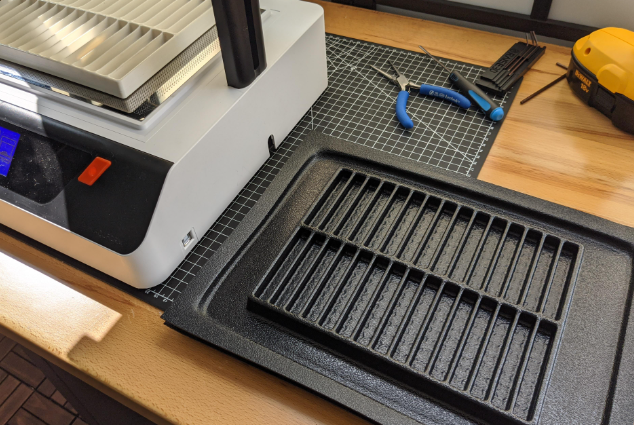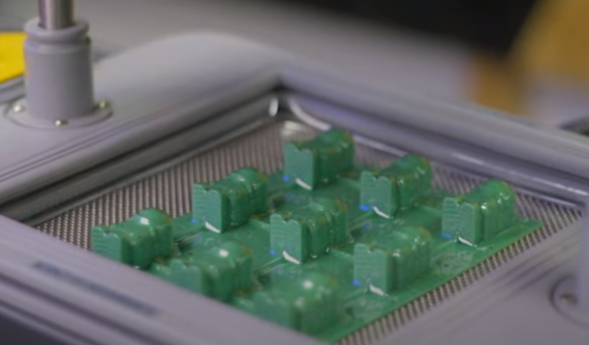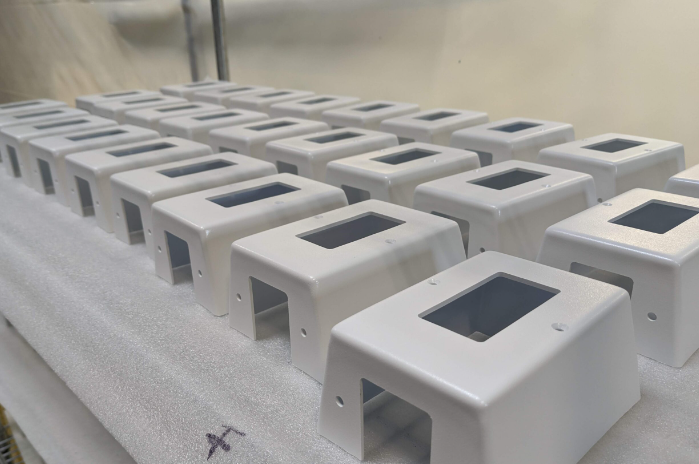Vacuum forming molds can be made from wood, aluminum, and high-density foam, each offering unique advantages and limitations.
Materials Used in Vacuum Forming Molds
Vacuum forming molds can be crafted from a variety of materials, each offering distinct benefits. The selection of material significantly impacts the quality, durability, and intricacy of the final product. Common materials include wood, aluminum, and high-density foam, each suitable for different applications and project requirements.

Wood: Properties and Uses in Mold Making
Wood, often used for prototyping and short-run applications, is a versatile material in mold making. Its easy workability allows for quick and cost-effective mold production. However, wooden molds have a limited lifespan and are less suitable for high-detail or high-volume production. The typical lifespan of a wooden mold varies, but it generally supports up to 100 cycles depending on the complexity and maintenance.
Advantages of Wood:
- Affordability: Cost-effective for small-scale projects and prototypes.
- Workability: Easily machined and modified.
- Availability: Widely accessible.
Limitations:
- Durability: Less durable than metal molds, prone to wear.
- Precision: Not ideal for highly detailed forms.
Aluminum: Characteristics and Advantages for Molds
Aluminum stands out for its durability, precision, and thermal conductivity. It’s ideal for high-volume production and detailed designs, ensuring consistency across numerous cycles. Aluminum molds can last for thousands of cycles, making them a long-term investment. The cost of aluminum molds varies but is generally higher than wood, justified by their longevity and performance.
Advantages of Aluminum:
- Durability: Withstands high production volumes.
- Precision: Suitable for detailed and complex designs.
- Thermal Conductivity: Efficient heat transfer for quicker cycles.
Limitations:
- Cost: Higher initial investment compared to wood.
- Machining Requirements: Requires specialized equipment for fabrication.
High-Density Foam: Features and Applications in Vacuum Forming
High-density foam is a lightweight and cost-effective option, primarily used for prototyping. Its ease of shaping allows for rapid mold production. Foam molds are best suited for limited production runs as they wear out faster than wood or aluminum. The cost-effectiveness of foam molds makes them a popular choice for initial design testing and low-budget projects.
Advantages of High-Density Foam:
- Lightweight: Easy to handle and manipulate.
- Cost-Effective: Low material and production costs.
- Rapid Production: Quick turnaround for prototype development.
Limitations:
- Durability: Limited lifespan, not suitable for high-volume production.
- Detail Limitation: Less capable of producing intricate details compared to metal molds.
Comparative Analysis of Mold Materials
In vacuum forming, the choice of mold material significantly impacts the overall success of the process. This analysis delves into the durability and lifespan, cost, and performance of different materials in vacuum forming scenarios.
Durability and Lifespan Comparison
| Material | Durability | Lifespan | Suitable Applications |
|---|---|---|---|
| Wood | Moderate | Up to 100 cycles | Prototyping, Short-run |
| Aluminum | High | Thousands of cycles | High-volume, Detailed designs |
| High-Density Foam | Low | Limited, varies based on usage | Prototyping, Low-budget |
Key Points:
- Wood: Affordable but less durable, suitable for short-term use.
- Aluminum: Offers longevity, ideal for continuous, detailed production.
- High-Density Foam: Cost-effective for early-stage prototyping, but lacks durability for long-term use.
Cost Analysis of Different Materials
- Wood: The most budget-friendly option, wood is perfect for low-cost, small-scale projects. The price range varies based on wood type but generally remains significantly lower than metal alternatives.
- Aluminum: With a higher initial cost, aluminum molds are a long-term investment. Their cost is justified by their extended lifespan and ability to maintain quality over numerous production cycles.
- High-Density Foam: This material offers the lowest cost, primarily used for its rapid prototyping capabilities. However, the need for frequent replacement might increase overall project costs in the long term.
Performance in Various Vacuum Forming Scenarios
- Wood excels in simple, low-volume projects. Its ease of machining makes it a go-to for initial design stages.
- Aluminum is the preferred choice for high-precision, high-volume manufacturing. Its heat conductivity and strength ensure consistent quality.
- High-Density Foam is ideal for conceptual models and design validation due to its ease of shaping and modification.
Design Considerations for Vacuum Forming Molds
Designing molds for vacuum forming is a critical process that significantly influences the quality and efficiency of the final product. The material chosen for the mold directly impacts various aspects of the design, including precision, durability, and cost-efficiency.
Mold Design Principles Based on Material Selection
When selecting a material for vacuum forming molds, it’s essential to consider the specific requirements of the project. Each material brings unique characteristics that dictate the design approach:
- Wood: Ideal for simpler designs due to its limited durability and precision. Designers often choose wood for less intricate parts and prototypes. The design must account for wood’s tendency to warp or degrade under high temperatures.
- Aluminum: The go-to material for high-precision and complex designs. Aluminum molds require careful design to leverage their high durability and excellent thermal properties. Designers can incorporate intricate details and textures, given aluminum’s capability to capture fine features.
- High-Density Foam: Best suited for preliminary prototypes and simple forms. Designs for foam molds focus on ease of fabrication and modification, acknowledging the material’s lower durability and detail resolution.
Key Considerations:
- Material Strength and Wear Resistance: Influences the mold’s ability to withstand repeated use.
- Thermal Properties: Affect the cooling rate and cycle time in the vacuum forming process.
- Detail and Texture Capability: Dictates the level of intricacy achievable in the final product.
Impact of Material on Mold Precision and Detail
The choice of material has a profound effect on the precision and detail level of vacuum-formed parts:
- Wood Molds: Less capable of achieving high precision and fine details. Suitable for broader, less intricate designs.
- Aluminum Molds: Excel in delivering high precision and detailed textures. Their robustness allows for the production of intricate and tightly toleranced parts.
- Foam Molds: Limited in terms of precision and detail, best for basic shapes and forms.
Design Implications:
- Complexity of Design: More complex designs require materials like aluminum to accurately capture details.
- Tolerance Levels: High precision projects need materials that can maintain tight tolerances, like aluminum.
- Surface Finish: The material affects the smoothness and texture of the final product’s surface.

Material Specific Processing Techniques
The process of creating molds for vacuum forming varies significantly depending on the material used. Each material requires distinct techniques and considerations to ensure the mold meets the desired specifications and quality standards.
Techniques for Wood Mold Fabrication
Fabricating molds from wood involves several steps tailored to its properties:
Design and Planning: Start with a detailed design, considering wood’s limitations in precision and detail.
Material Selection: Choose a type of wood that balances cost and durability, typically hardwoods for their strength and resistance to wear.
Cutting and Shaping: Use woodworking tools like saws, routers, and lathes to cut and shape the wood into the desired form.
Sanding and Finishing: Smooth the mold’s surface through sanding. Apply sealants or coatings to protect the wood from moisture and heat.
Assembly: If the mold consists of multiple pieces, assemble them with strong adhesives or mechanical fasteners.
Methods for Machining Aluminum Molds
Machining aluminum for vacuum forming molds requires a more technical approach:
Design and CAD Modeling: Create a precise computer-aided design (CAD) model, considering aluminum’s capability for detailed and complex shapes.
CNC Machining: Utilize computer numerical control (CNC) machines for accurate and efficient cutting and shaping of the aluminum block.
Surface Treatment: Perform treatments like anodizing or coating to enhance the mold’s surface properties and durability.
Quality Inspection: Conduct thorough inspections to ensure the mold meets all design specifications and tolerances.
Assembly: If necessary, assemble multiple components of the mold, ensuring tight and precise alignments.
Shaping and Preparing High-Density Foam Molds
High-density foam molds are comparatively easier and quicker to prepare:
Design Consideration: Focus on simple designs, keeping in mind foam’s limitations in detail and durability.
Cutting and Carving: Use tools like hot wires, knives, or CNC routers to cut and carve the foam into the desired shape.
Sanding and Smoothing: Smooth out the surface to achieve a uniform texture, which is crucial for quality in the final product.
Protective Coating: Apply a protective coating to extend the life of the foam mold and resist wear during the forming process.
Final Adjustments: Make any necessary adjustments or refinements to ensure the mold’s accuracy and functionality..

Material Selection Criteria
Selecting the appropriate material for vacuum forming molds is a critical decision that affects the efficiency, cost, and quality of the manufacturing process. Various factors influence this choice, ranging from the specific requirements of the project to environmental and operational considerations.
Factors Influencing Material Choice for Specific Projects
- Design Complexity: For intricate designs requiring high precision, aluminum is the preferred choice due to its ability to accurately capture details. Wood and foam are more suited for simpler, less detailed designs.
- Production Volume: High-volume projects necessitate durable materials like aluminum, which can withstand repeated use without significant wear. Wood and foam are better for low-volume or prototype productions.
- Budget Constraints: Cost is a major factor; wood and foam are cost-effective for limited budgets, while aluminum, being more expensive, is justified for long-term, high-volume projects.
- Project Timeline: If quick turnaround is essential, materials like foam and wood, which are easier and quicker to work with, might be preferable. Aluminum requires more time for machining and processing.
- Tolerance and Precision Requirements: Aluminum offers superior precision and can maintain tight tolerances, essential for high-quality, detailed parts.
Environmental and Operational Considerations in Material Selection
- Thermal Properties: The material’s response to heat impacts the mold’s performance. Aluminum, with good thermal conductivity, is ideal for projects requiring fast cycle times.
- Durability and Lifespan: For environmentally conscious operations, selecting a material with a longer lifespan like aluminum reduces waste and the need for frequent replacements.
- Ease of Recycling: The recyclability of the material is important for sustainable practices. Aluminum molds, for instance, can be recycled at the end of their lifecycle.
- Health and Safety: The manufacturing process of certain materials might pose health and safety risks. Wood, for instance, can create dust particles, requiring proper ventilation and protective measures.
- Environmental Impact: Consider the ecological footprint of the material, including its sourcing and manufacturing processes. Aluminum, while recyclable, has a higher initial environmental impact due to energy-intensive production processes.




